Comments on five noteworthy Web3.0 decentralized social applications and publishing tools
When the bull market was booming at the beginning of the year, a large number of social dapps came out, each claiming to move web2 social software such as Twitter, FB, IG, BBS, etc. to the blockchain. These so-called socialFi emphasized the spirit of web3 in a high-sounding way. , decentralization and ownership, in fact, the spam issuance of shitcoins with only short-term value creates hot spots and the myth of instant wealth for early users. Most of these social dapps are pump-and-dump financial games colluded by currency speculators and wooly parties. Users, developers, and investors are all here for short-term profits. After the popularity is over, most platform users will leave.
The current bull market is just the right time to more clearly evaluate the current decentralized social applications that Web3 is quite interesting and is still doing practical things. The following introduces five active decentralized social applications of Web3 one by one:
1. Mirror.xyz
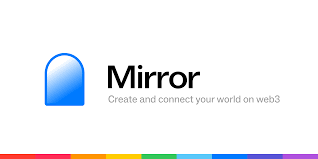
Yangchun's simple decentralized publishing tool
Mirror is currently the most well-known web3 social product in the currency circle, with the largest number of active users and a leading position. It is funded by the well-known crypto venture capital a16z and is supported by many crypto tycoons around the world. The function of Mirror is similar to that of a traditional blog, but posting on it will make you appear to be web3 native, giving you a special aura of style in the circle. Its success is not only due to the power of KOLs in the currency circle to bring goods, but also to a certain extent because web2 social giant platforms such as Google and Meta have abandoned or deliberately squeezed out concise blog long article publishing services, leaving a certain There is no window, so Mirror has created an actual niche that is different from the massive web2 copy cats mentioned above.
Users only need to use their wallet to connect to the Ethereum network and create a posting page belonging to a specific ENS. Users can post for free and make unlimited free modifications on it. The platform will automatically upload your content to the decentralized cloud storage IPFS through Arweave. At the same time, the content of the post can also be immediately set to a free The NFT is priced at a certain amount. People who like the article can directly mint and collect the NFT of the article to sponsor the author.
Poor social user experience and organic traffic
However, what is criticized is that the current user experience of Mirror is still very positive. Although the SEO effect is not bad when posting articles, the user interface (except for the NFT system) lacks any built-in social interaction functions. You cannot leave messages or follow different authors to create your own reading feed, and the system will not automatically push broadcasts. Relevant content for readers.
If the poster himself is not a big V with established traffic, or can be promoted through external relationships, it will be difficult for ordinary people to accumulate attention by simply posting on Twitter (sharing Mirror links on Twitter may be the best solution for ordinary people to expand their reach) , because apart from independent sharing links and reluctant search engines, it is basically impossible to find readers with natural traffic, let alone buyers who appreciate your article NFT, and the author cannot see any read data and traffic sources in the background. , which naturally fails as a writing platform.
Opensea platform-style decentralization
Regardless of the user experience, even by the technical standards of decentralization advocates, Mirror is still not decentralized enough. The program is not open source, and the front-end and back-end designs cannot be modified by users. They are highly dependent on the platform to upload them for you. Instead of directly uploading content to the chain, the user does not actually own the data (even if the background traffic cannot be viewed, does the user have ownership of the content)? After posting, the user will not automatically hold any ERC-721 NFT, only Relying on the platform to sell NFT.
For the relevant technical flaws of Mirror, please see: Atlas 〈Redefining publishing: Mirror has not done enough, we need to continue to explore〉
Operation and development progress that does not meet valuations
It is hard to believe that Mirror, a company with a huge investment of more than 10 million US dollars, a valuation of 100 million US dollars and a development history of more than five years, has only achieved this level of development and has such a slow attitude towards development and operations. Mirror can have any amazing breakthroughs in the future, but at least in the short term it still has a leading position in actual applications and traffic.
Third-party Mirror content search and reader
Due to the aforementioned slow development attitude of Mirror, the Mirror readers currently seen are all third-party.
- AskMirror
Developed by the Sepana team, the team has a leading position in web3 search engines and has multiple sets of search engines.
- MirrorBeats
Built by Chinese blockchain media "Block Rhythm".
- Bress
Developed by Cyberconnect, it mainly contains Chinese content, operates in conjunction with CuratorDAO, and provides XML RSS subscription services.
2. Lens Protocol
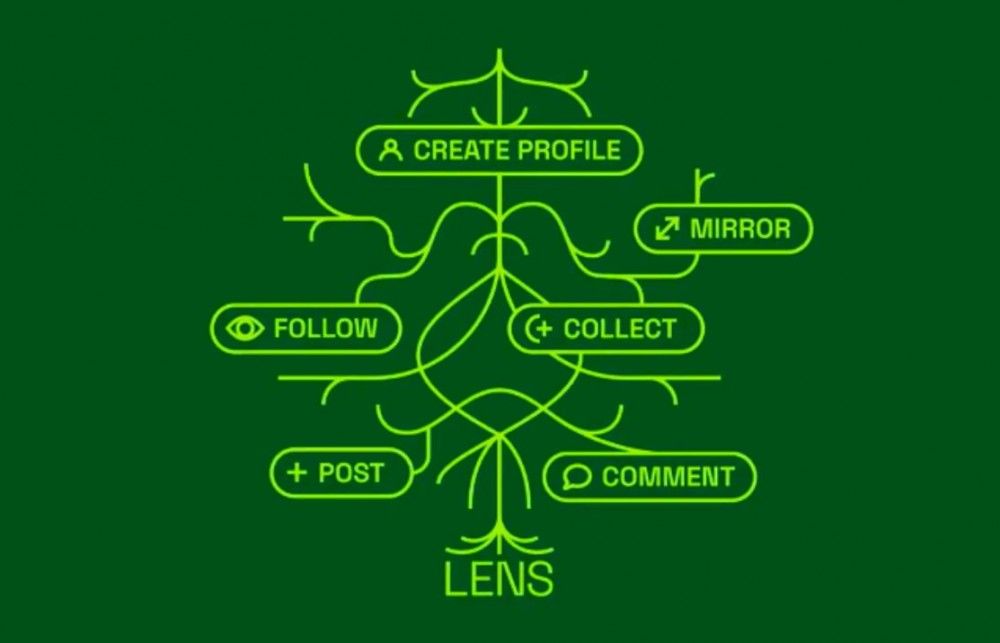
What is Lens Protocol?
Lens Protocol itself is not a social software, but aims to establish a new on-chain social identity protocol standard. The purpose is to improve (or replace) the Web3.0 network personality with ENS addresses as the core, and supplement the social networking that ENS itself lacks. Interactive functionality is tied to technical limitations of Ethereum itself.
The Lens team comes from AAVE’s reputational foundation
It is worth mentioning that Lens is a newly launched product by the AAVE development team, a pioneer in De-Fi lending. The team has a good developer reputation and user base in Web3. After being promoted, Lens has gradually established a large-scale social application development ecosystem.
Lens client application
The current Web3.0 applications based on Lens Protocol are mainly similar to Web2 social software such as Twitter. The difference is that the user's followers, posts, messages, and interaction records will be linked to each person's unique profile NFT. Posts will also automatically become personally owned NFTs, allowing users to monetize and trade social content and usage records more directly.
Lens Handle Extraordinary Limited Open Beta
Lens Protocol is currently still in the small-scale public beta stage. The Lens Handle NFT required to participate in the public beta is not for sale to the public, nor is it open to free collection. This avoids being deliberately robbed by robots washing traffic, and also creates a unique sense of honor based on a Clubhouse-style invitation system. The last time Handle was released on a large scale was before May this year. It seems that it is currently only used as a reward for new users of third-party software in the ecosystem. There will be sporadic news on the official Lens Twitter.
Interpretation of Lens’ ecosystem strategy
Since Lens Protocol itself is not a social software, but aims to establish a new Web3.0 identity standard that replaces ENS, and at the same time build a semi-closed and semi-open application ecosystem around Lens. Lens Protocol welcomes various third-party developers to build social software using Lens’ on-chain social identities. Different Lens social software share the same social relationships and interaction records, which is equivalent to the friends you have added on Facebook. Special ones also automatically become friends.
The prosperity brought about by integrating the decentralized Web3.0 community and the potential centralized behemoth
The advantage of Lens design is that it can be integrated and dispersed on various decentralized social platforms. There are currently only a few active users of web3. The disadvantage is that this design has actually created a new behemoth. Without Lens handle, your online personality will be lost. No, you cannot participate in web3 social activities without Lens handle, and unlike ENS based on the Ethereum network, which has public and decentralized distributed computing verification nodes, the storage of Lens social interaction data does not promise to be on the chain or It is decentralized storage. In the short term, the design of Lens's operating model has indeed brought about a rare development and user-side prosperity in the web3 track, but in the long term it goes against the original intention of web3 to resist the centralized behemoth.
Noteworthy applications in the Lens ecosystem
Within the Lens ecosystem, I think there are several noteworthy applications:
- Lenster
The Lens version of Twitter is most popular on Lens
- Sepana
Lens version of search engine and content exploration tools
- Tea Party/Iris
Both are similar to Lenster, both are Twitter imitators and feed reading software.
- LENSFRENS
Lens official self-promoted follow tool
- RSS3/RSS3 Piñata
On RSS3, you can directly use ENS to search for the user's activities on Lens. It is also an RSS-style cross-platform subscription reader. It is a new member of the Lens ecosystem and will soon launch an exclusive application on it.
- other
Please refer to Lens official website: https://lens.xyz/#apps
3. MattersMatt City

Web3 social platform that is most like social software
Matters is the most unlike a Web3.0 Red Army base among many Web3 platforms. It may have the largest number of natural writing and reading users (mainly in the Chinese-speaking community). Most of the users have simple motives and do not come for crypto-financial speculation or airdrop rewards. Therefore, the discussion on Matters does not focus on Web3.0 and cryptocurrency. Like any web2 social platform, you can share your daily life, talk about culture, talk about politics or any ideas on it without feeling embarrassed.
IPFS-ified Medium
The interface and functions of Matters are similar to Medium's writing platform, and the user experience is the most comfortable compared to other Web3.0 platforms. The difference is that the content will be permanently saved on the decentralized storage network IPFS. Each article has an IPFS address. However, It seems that it cannot be opened after leaving the platform.
If there are seemingly no Likecoin user rewards
The relationship between Matters and the blockchain industry is actually not that big. Although there is a built-in Likecoin design, users can get meager cryptocurrency benefits for being liked, and can also use ENS to connect to L2’s polygon network to log in, but most of them The interaction is still not on the decentralized chain, and the platform management direction does not intend to attract the wooly parties in the currency circle. Likecoin itself only has a small amount of transactions on Cosmos's DEX Osmosis, and the currency price is miserable . It is not listed as spot or contract on any CEX. Frankly speaking, the value of the currency is approaching zero. The managers who have suffered from this year's currency disaster may not be able to do it now. We don’t have the financial resources to strongly save this charity promotion.
Poor organic traffic
However, in terms of platform operation alone, Matters’ traffic gives me the impression that there is a lot of thunder and a small amount of rain. It feels like there are a lot of real interactive exchanges going on, but the actual quantified natural traffic is very few (there are actually Taiwanese platforms that want to (I want to imitate him), SEO may not be very good as a blog publishing tool. When I looked at the background data for the first time, I found that my serious movie review had been on the platform for more than two years and accumulated less than a hundred views. It was better than the one in my elementary school that only published useless articles with Chinese accent. It’s really sad that so few people read Qimo’s blog.
The Web 2.5 Eclectic Dilemma
As far as my personal observation is concerned, Matters is still in the position of an eclectic. It does not have the momentum of the above-mentioned web3 applications based on blockchain to empower users completely based on technology, but it obviously does not have the tradition. The algorithmic traffic advantage of centralized hegemonic social platforms Twitter and Meta. However, as mentioned at the beginning, the number of normal users of Matters is still the largest by the standards of the web3 platform. It depends on how the operators of Matters can break through.
4. ENS, EIP-1577 and IPFS
As mentioned above, IPFS is a cloud storage system for decentralized storage networks, and content can be permanently stored on it. EIP-1577 is the Ethereum Improvement Proposal No. 1577, which proposes an ENS contenthash. The content tag on IPFS points to an ENS address. Using this technology, a decentralized blog can be directly established in the name of ENS. However, at present, perhaps only people who are skilled in decentralized technology (such as Vitalik himself) or Ethereum Maximalists will be willing to publish content using such technology. At present, there does not seem to be a clear emphasis on the user-side simple posting applications of the two, and they are simply decentralized. In terms of goals, I personally think it is quite an ideal approach.
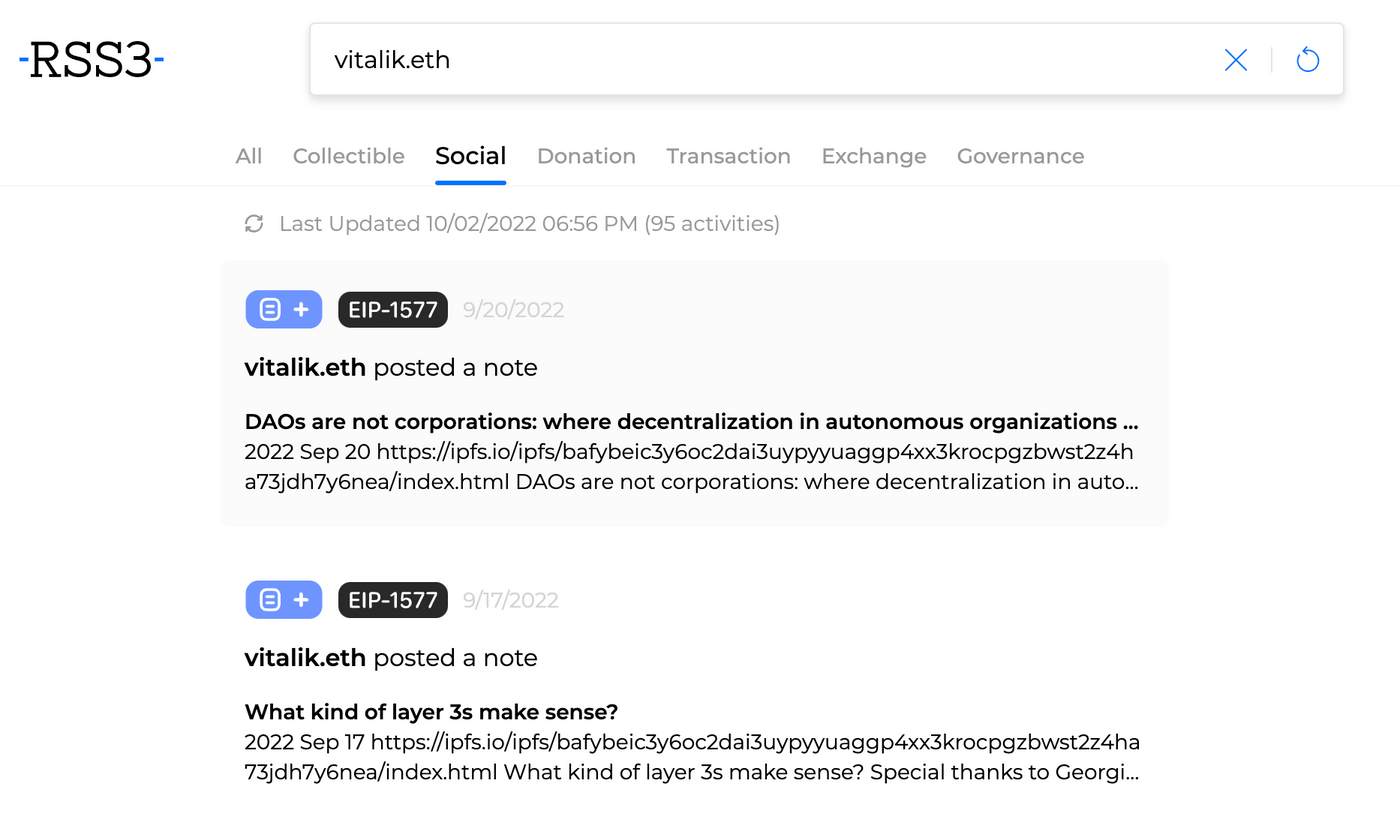
5. RSS3
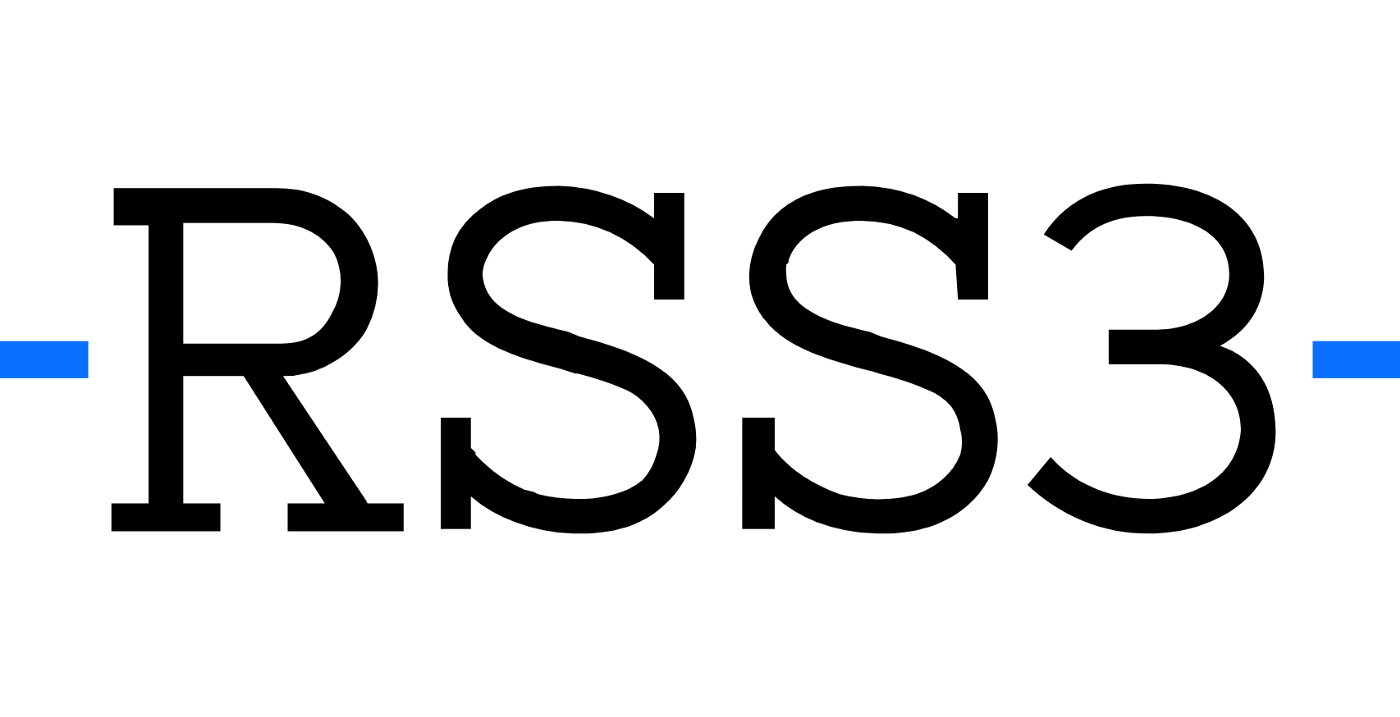
Anti-platform decentralized radicals
RSS3 is a particularly radical anomaly in the web3 field. When various web3 applications imitate web2 services and try to increase the DAU (daily active users) of the platform as much as possible, RSS3 advocates that all platforms have their limitations and should It is a middleman that can be eliminated. Only by returning to the era of self-operation and autonomy by users can we realize true web3 and achieve true decentralization and user freedom.
Based on this idea, it naturally brings out the unique Web3.0 technology. RSS3 focuses on solving the technical difficulties of "pre-Web2.0": "How to maintain user autonomy while still being heard by other users." ", and "How to use blockchain technology to enable individual users who do not have a personal server to easily operate their own websites and maintain maximum autonomy."
How to achieve content diffusion without a platform
Regarding the first dissemination issue, RSS3 proposes the RSS3 open source protocol based on RSS, which provides a platform-free tracking subscription service similar to RSS. Due to the openness of Web3's blockchain activities, all on-chain activities, after being classified and transformed by RSS3, can become traceable RSS-like content composed of natural language. Information producers on the chain can communicate with readers, such as RSS Feed also establishes a direct relationship without the need for any intermediary services from the social platform.

RSS3.io is the implementation of this communication technology. You can enter any ENS here to view and RSS subscribe to its on-chain activities.
Using blockchain to achieve maximum user autonomy and ownership
In response to the second publishing issue, RSS3 launched the open source xLog on-chain blogging service, which is more decentralized than Mirror. Users can publish content to both IPFS and EVM blockchain Crossbell for free, and it provides highly customizable services. Personal blog pages with customized styles, URLs, and navigation bars, and these customized settings are all stored on the blockchain.
See " xLog, the first open source on-chain blogging system "
How to use xLog blog for publishing
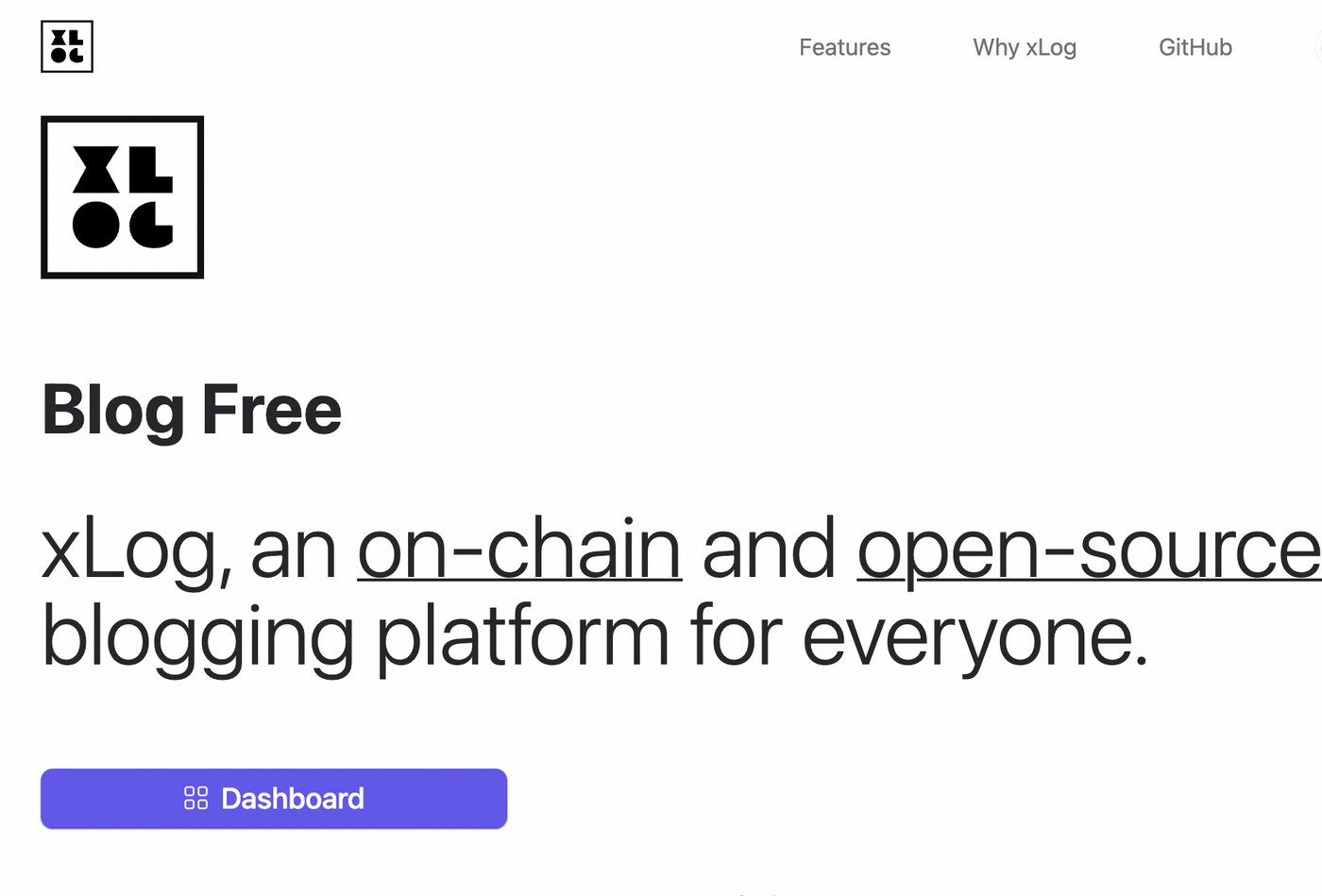
Users only need to log in with ENS and receive free CSB to publish and make changes on the Xlog blog. Although many operations require CSB verification, the function of CSB Token here is not so much a currency, but more like a beacon certificate for operating the blockchain. When used up, you can get it again at the Crossbell faucet every day. After the transaction fee There is no need to feel worried or distressed at all.
Crossbell faucet
Just enter the ENS address to receive free CSB
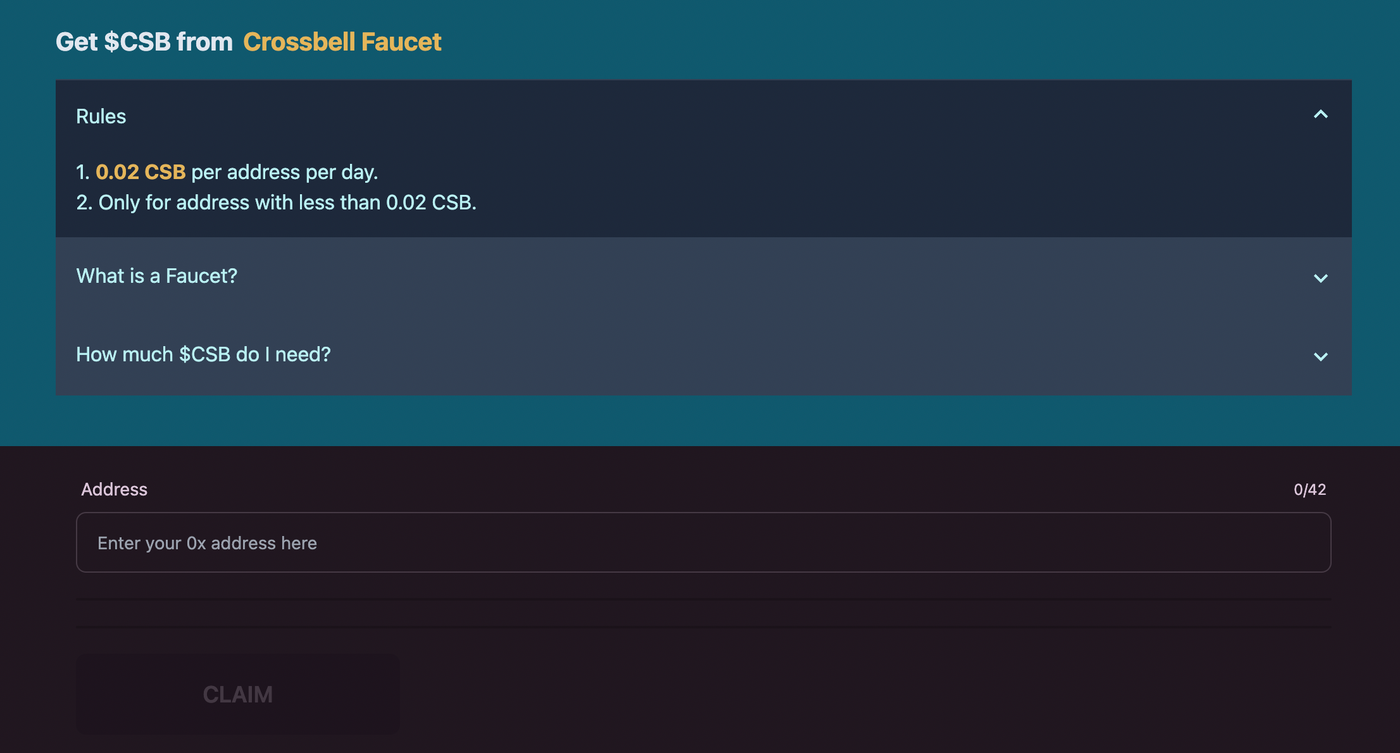
An Internet utopian future for a small country with few people
At present, there are not many users in the RSS3 ecosystem. However, the RSS3 team’s strong technical strength in open source development (please refer to its core developers’ GitHub ), its basic and pragmatic decentralized network technology ideals, and its user-friendly development attitude. The future can be expected. To a certain extent, RSS3, a utopia of Internet freedom in a small country with few people, is more in line with my personal imagination of the future of Web3.0 than the emerging social platform empire covered in the new skin of web3.
in conclusion
The above are several social applications and tools that I personally think are worth paying attention to in Web3.0. From Mirror, the publishing platform that currently dominates the currency circle but has poor experience, to Lens, which is still buried in the ground but has recruited a large number of web3 developers, and compromise ism Matters, all the way to the decentralized holy warrior RSS3, your personal opinions are welcome to share freely and comment on.
Like my work? Don't forget to support and clap, let me know that you are with me on the road of creation. Keep this enthusiasm together!










